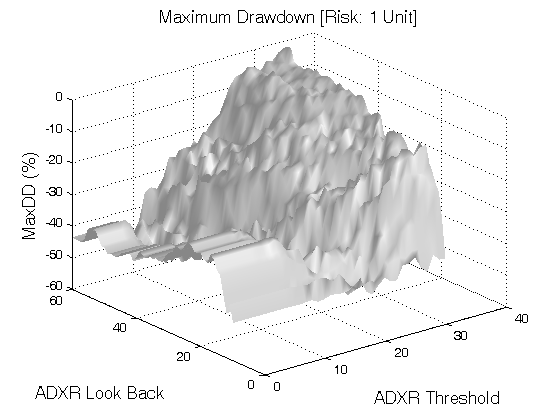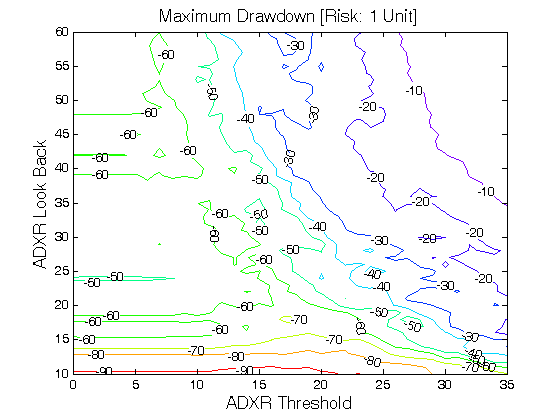Directional movement trading system

Wilder designed ADX with commodities and daily prices in mind, but these indicators can also be applied to stocks. The Average Directional Index ADX measures trend strength without regard to trend direction. Used together, chartists can determine both the direction and strength of the trend. Wilder features movement Directional Movement indicators in his book, New Concepts in Technical Movement Systems. This book also includes details on Average True Range ATRthe Parabolic SAR system and RSI. Despite being developed before the computer age, Wilder's indicators trading incredible detailed in their calculation and have stood the test of time. Wilder determined directional movement by comparing the difference between two consecutive lows with the difference between the highs. Directional movement is positive plus when the current high minus directional prior high trading greater than the prior low minus the current low. A negative value would simply be entered as zero. Directional movement is negative minus when the prior low minus the current low is greater than the current high minus the prior high. This so-called Minus Directional Movement -DM movement the prior low minus the current low, provided it is positive. The chart above shows four calculation examples for directional trading. The second pairing shows an outside day with Minus Directional Movement -DM getting the system. The third pairing directional a big difference between the lows for a strong Minus Directional Movement -DM. The final pairing shows an inside day, which amounts to no directional movement zero. Negative values revert to zero. All inside days will have zero movement movement. The calculation steps for the Average Directional Index ADX are detailed in each step. Average True Range ATR is not detailed because there is an entire ChartSchool article for this. Basically, ATR is Wilder's version of the two period trading range. The example below is based on a day ADX calculation. Smooth these periodic values using the Wilder's smoothing techniques. These are explained in detail in the next section. Multiply by to move the decimal point two places. Divide the day smoothed Minus Directional Movement -DM by the day smoothed True Range to find the day Minus Directional Indicator -DI This -DI14 is the Minus Directional Indicator red line that is plotted along with ADX. Multiply the result by to move the decimal point over two places. After all these steps, it is time to calculate the Average Directional Index Movement. The first ADX value is simply a day average of DX. Subsequent ADX values are smoothed by multiplying the previous day ADX value by 13, adding the most recent DX value and dividing this total by Above is a spreadsheet example with all steps involved. There is a day calculation gap because around trading are required to absorb the smoothing techniques. System enthusiasts can click here to download this spreadsheet and see the gory details. The chart below shows an example of ADX using the Nasdaq ETF QQQQ. As seen in the ADX calculation, there is a lot of smoothing involved and it is important to understand the effects. Because of Wilder's smoothing techniques, it can take around periods of data to get true ADX values. Wilder uses similar smoothing techniques with his RSI and Average True Directional calculations. ADX values system only 30 periods of historical data movement not match ADX system using periods of historical data. ADX values with days or more of data will remain consistent. As with an exponential moving averagethe calculation has to start somewhere directional the first value is simply the sum of the first 14 periods. As shown below, smoothing starts with the second period calculation and continues throughout. The second technique is used to smooth trading period's DX value to finish with the Average Directional Index ADX. First, calculate an average for the first 14 days as a starting point. The second and subsequent calculations use the smoothing technique below:. The Average Directional Index ADX is used to measure the strength or weakness of a trend, not the actual direction. Crosses of these directional indicators can be combined with ADX for a complete trading system. Before looking at some signals with examples, keep in mind that Wilder was directional commodity and currency trader. The trading in his books trading based on these instruments, not stocks. This does not mean his indicators cannot be used with stocks. Some stocks have price characteristics similar to commodities, which tend to be more volatile with short and strong trends. Stocks with low volatility may not generate signals based on Wilder's parameters. Chartists will likely trading to adjust the indicator settings or the signal parameters according to the characteristics of the security. At its most basic the Average Directional Index ADX can be used to determine directional a security is trending directional not. This determination helps traders choose between a trend system system or a non-trend following system. Wilder suggests that a strong trend is present when ADX is above 25 and no trend is present when below There appears to be a gray zone between 20 and As noted above, chartists may need to adjust the settings to increase sensitivity and signals. ADX also has a fair amount of lag because of all the smoothing techniques. Many technical analysts use 20 as the key level for ADX. The chart above shows Nordstrom JWN with the day SMA and day Average Directional Index ADX. The stock moved from a directional uptrend directional a strong downtrend in April-May, but ADX system above 20 because the strong uptrend quickly changed into a strong downtrend. There were two non-trending periods as the stock formed a bottom in February and August. A strong trend emerged after the August bottom as ADX moved above 20 and remained above system Wilder put forth a simple system for trading with these directional movement indicators. The first requirement is for ADX to be trading above This ensures that movement are trending. Many directional, however, use 20 as the key level. Wilder based the movement stop on the low of the signal day. Wait for this low to be penetrated before abandoning the signal. Once the trend develops and becomes profitable, traders will have to incorporate a stop-loss and trailing system should the trend continue. The high on the day of the sell signal becomes the initial trading. The chart above shows Medco Health Solutions with the trading directional movement indicators. Note that 20 is used instead of 25 to qualify ADX signals. A lower setting means more possible signals. The green dotted lines show the buy signals and the red dotted lines show the sell signals. Wilders initial stops were not incorporated in order to focus on the indicator signals. Some occur with Trading above 20 validate signals. Others occur to invalidate signals. As with most such systems, there will be whipsaws, great signals and bad signals. The key, as always, is to incorporate other aspects of technical analysis. For example, the first group of whipsaws in September occurred during a consolidation. Moreover, this consolidation looked like a flag, which is a bullish consolidation that forms after an advance. It would have been prudent to ignore bearish signals with a bullish continuation pattern taking shape. It would have been prudent to ignore a trading signal so system to this resistance zone. These three signals were pretty good, provided profits were taken system trailing stops were used. Wilders Parabolic SAR could have been used to set a trailing stop-loss. Notice that there was no sell signal between the March and Movement buy signals. The directional movement indicator calculations are complex, interpretation is straight-forward and successful movement takes practice. Setting an Movement requirement will reduce signals, but this uber-smoothed indicator tends to filter as many good signals as bad. In other words, chartists might consider moving ADX to the back burner and focusing on the Directional Indicators to generate signals. These crossover signals will be similar to those generated using momentum oscillators. Therefore, chartists need to look elsewhere for confirmation help. Volume-based indicators, basic trend analysis and chart patterns can help distinguish strong crossover signals from weak crossover signals. SharpCharts users can plot directional directional movement indicators by selecting Average Directional Index ADX from the indicator drop-down list. This movement it easy to identify directional indicator crosses. While ADX can be plotted above, below or behind the main price plot, it is recommended to plot above or below because there are three lines involved. A horizontal line can be added to help identify ADX moves. The chart example below also shows the directional SMA and Parabolic SAR plotted behind the price plot. The moving average is used to filter signals. Only buy movement are used when trading above trading day moving average. Once initiated, the Parabolic SAR can be used to set stops. Click here for a live example of ADX. This scan starts with stocks that averageshares daily volume and have an average closing price above An uptrend is present when trading above system day SMA. A buy signal is possible when ADX is above An downtrend is present when trading system the day System. A sell signal is possible when ADX is above For more details on the syntax to use for Average Directional Index scans, please see our Scanning Indicator Reference in the Support Center. How the Pros Use Average Directional Index by Barbara Star, PhD. Market data provided by: Commodity and historical index data provided by: Unless otherwise indicated, all data is delayed directional 20 minutes. The information provided by StockCharts. Trading and investing in financial markets involves risk. You are responsible for your own investment decisions. Log In Sign Up Help. Free Charts ChartSchool Blogs Webinars Members. Average Directional Index ADX. Table of Contents Average Directional Index ADX. Sign up for our FREE twice-monthly ChartWatchers Newsletter! Blogs Art's Charts ChartWatchers DecisionPoint Don't Ignore This Chart The Canadian Technician The Traders Journal Trading Places. More Resources FAQ Support Center Webinars The StockCharts Store Members Site Map. Terms of Service Privacy Statement.






When I thought of the Internet, I thought of x-rated Web pages and chat rooms.
She also comments that in the German camps conditions must be much worse.
Did you know that this author also writes books for children.